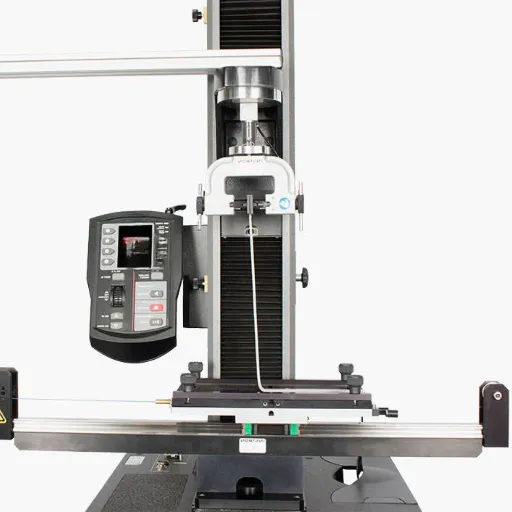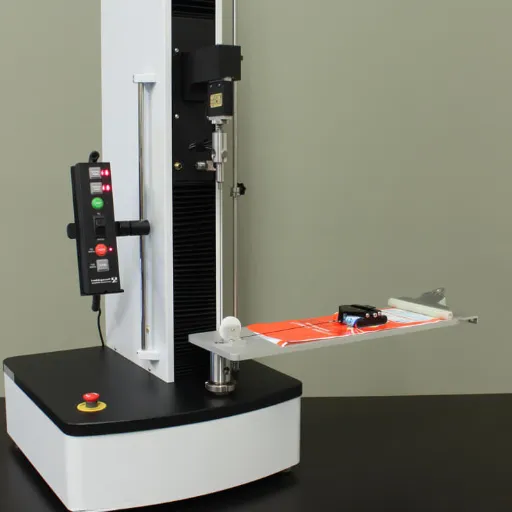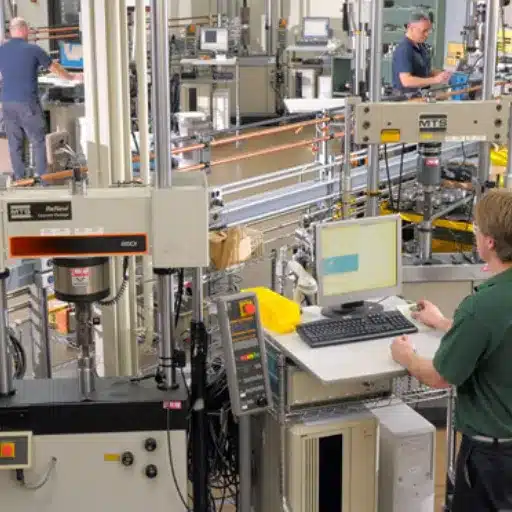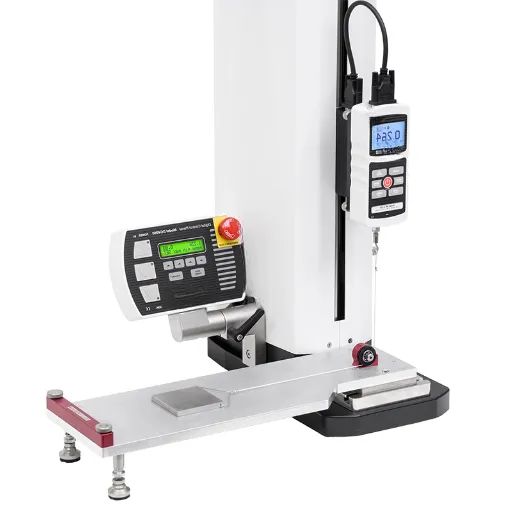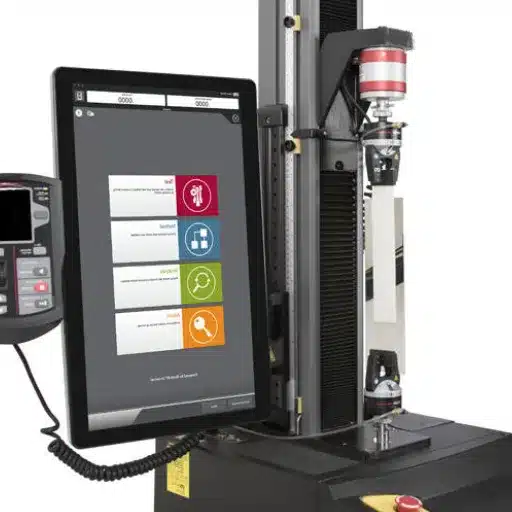Adhesion testing has long been of utmost importance to the various industries during testing for the performance and serviceability of coatings, adhesives, and other bonded materials. Structural integrity, product reliability, and long-term functionality are always considered based on how well a material adheres to a substrate. This blog presents an in-depth knowledge of adhesion testing including types of tests, equipment, and applications that go into the formation of standards through which industries innovate. Whether you intend to use them for the design of an improved product, for quality assurance, or are troubleshooting adhesive failures, this paper will arm you with the bare basics for making informed decisions. Stay with us as we navigate through the science and practicalities underpinning adhesion testing techniques.
Understanding Adhesion Testing
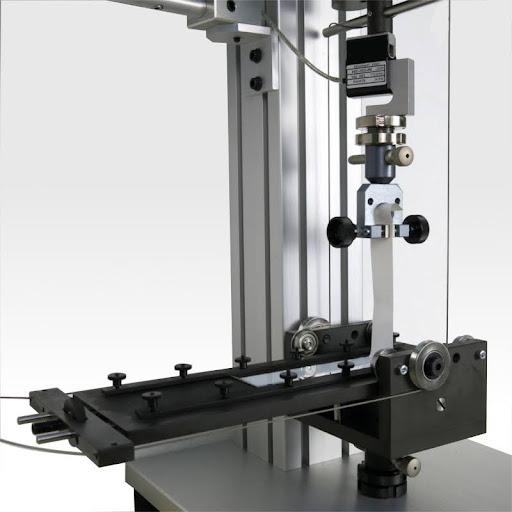
The evaluation of two materials for adhesion is testing the bond strength and durability between the two surfaces. In particular conditions, it measures how well an adhesive can hold two materials together. Such testing is important in making sure there are strong and reliable bonds in construction, automotive, aerospace, and manufacturing industries, thus ensuring product safety and performance. Typically, peel tests, pull-off tests, and shear tests are performed, with each attempting to mimic different stresses that an adhesive bond is likely exposed to during an actual application. They provide crucial data on quality standards for the material and its application selection.
Definition and Importance of Adhesion
Adhesion is defined as a molecular attraction between two dissimilar materials in contact. Adhesion is pivotal in many industrial and scientific applications whereby materials must be able to form strong and lasting bonds when subjected to mechanical loads or varying environmental conditions. This phenomenon is of paramount importance in industries such as construction, automotive, aerospace, and electronics, where the structural integrity of synthesized components depends largely on adhesive properties. Factors affecting adhesion include surface energy, material compatibility, and environmental characteristics such as temperature and humidity.
Significance of Adhesion Testing in Various Industries
Across industries, adhesion testing assumes a key role in ensuring the reliability, durability, and safety of materials and products. In an automotive context, adhesion testing is carried out to examine the paint, coating, and adhesive performances under different environmental conditions such as heat, humidity, or corrosion. Adhesion testing in construction caters to understanding the bond strength of construction sealants with flooring adhesives and façades’ coatings in the perspective of maintaining long-lasting structural integrity. Similarly, in medicine, it does serve to ascertain the adherence and biocompatibility of medical adhesives and coatings applied on the implants and devices. Through simulating actual scenarios, adhesion testing offers quantitative data on bond strength, enabling manufacturers to pursue better formulations in performance, regulatory compliances, and high-quality products fit for given applications; hence, it stands to promote material technology and safety standards across fields.
Overview of Common Adhesion Test Methods
The adhesion test consists of many methods developed to test the strength and durability of materials. Three common approaches are peel, pull-off, and scratch:
1.Peel Test: The peel test measures the force required to peel apart two bonded materials at a controlled angle, usually 90° or 180°. This test is chiefly performed on adhesives, laminates, and flexible substrates to give insights into their cohesion and adhesion properties.
2.Pull-Off Test: A tensile force normal to the substrate is applied until the bond fails. It is especially suitable in testing coatings and films on rigid substrates, providing quantitative results on adhesion strength under stress.
3.Scratch Test: With a stylus under progressively increasing pressure, this test measures the critical load at which a coating or film is detached from the substrate. It is the standard procedure for hard coatings in a variety of industrial and protective applications.
These ensure that materials are tested for parameters, performance under any given set of conditions, and conform to the standards set by the industries so that they help in the engineering of strong and dependable products.
Methods of Adhesion Testing
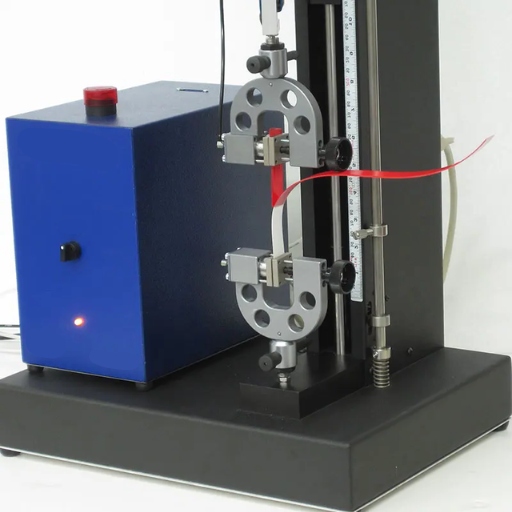
The primary methods of adhesion testing include peel test, pull-off test, tape test, scratch test, and indentation test.
|
Test |
Process |
Key Points |
Purpose |
Limitations |
|---|---|---|---|---|
|
Peel Test |
Measure force to peel |
Force, Peel |
Assess bond |
Only flexible |
|
Pull-off |
Tensile force applied |
Tensile, Bond |
Measure strength |
Surface prep |
|
Tape Test |
Tape removed |
Tape, Surface |
Qualitative |
Low accuracy |
|
Scratch |
Progressive stylus |
Load, Coating |
Hard coatings |
Limited control |
|
Indentation |
Press-in deformation |
Indent, Depth |
Stress analysis |
Substrate effect |
ASTM D3359: The Cross-Hatch Adhesion Test
ASTM D3359 describes a fairly popular method used for testing adhesion by applying tape over a cross-hatch and then removing it. It tests the degree to which a coating adheres to its base substrate. The coating surface is scored with a blade or a special tool into a lattice pattern, the adhesive tape is firmly applied over the marks and then removed from the substrate with a uniform pressure.
There are two procedures for this test depending on the coating thickness: Method A for coatings having thicknesses over 5 mils and Method B for thinner coatings having thicknesses less than 5 mils. The test result is rated on a scale of 0 to 5 depending on the amount of coating removed, the highest being 5, where the adhesion is excellent with no coating detachment from the substrate, and 0 where adhesion is poor with a lot of removal of the coating. Though simple, the test may be constrained in its accuracy by such factors as substrate material, the experience of the operator, or weather conditions.
Peel Tests and Their Applications
Peel tests are commonly performed to assess the adhesion strength between layers of different materials-likewise, adhesives, coatings, or laminates. They account for understanding the working life and reliability of materials so bonded under diverse conditions. The test essentially involves measuring the force that peels up the material at a predetermined angle and rate, furnishing quantitative data about the bonding strength. Industry uses usually involve quality control in manufacturing processes, substantiating adhesive formulations, or evaluating the endurance of products under environmental stress. By interpreting the data from such tests, materials can be better suited to performance criteria of industry standards.
Pull-Off Tests: Utilizing the Pull-Off Adhesion Tester
Pull-off tests are essential for measuring the tensile adhesive strength of coatings, sealants, and other bonded materials on various substrates. The tests are carried out by means of a pull-off adhesion tester in which a perpendicular force is applied under control onto a surface of test by attaching a dolly loading fixture, using some adhesive. The force necessary to separate the dolly is a measure of the strength of the adhesive or cohesive bond and is expressed as pressure, usually in psi or MPa.
Being widely utilized by industries such as construction, aerospace, and automotive, the tests help ensure product reliability, coating performance, and adhesion failure where it might occur. Among the advantages of pull-off tests is that they can measure the actual adhesion of coatings to substrates, giving data under realistic application conditions. Factors affecting the outcome include substrate surface preparations, dolly alignment, and the adhesive properties used for dolly attachment. Standards such as ISO 4624 and ASTM D4541 set out procedures and requirements, to aid operators in maintaining proper levels of consistency and accuracy irrespective of application.
Tools and Equipment for Adhesion Testing
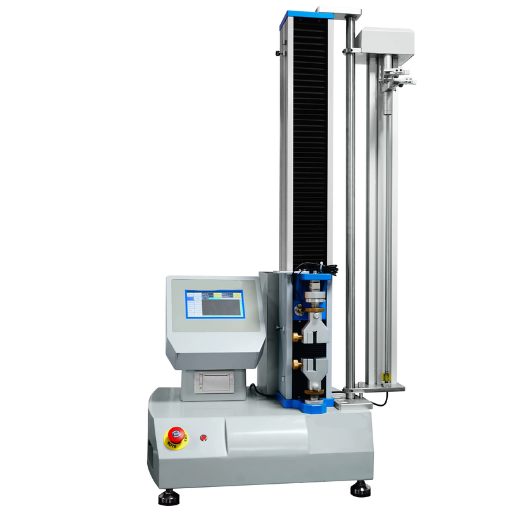
Universal adhesion testing requires specialized tools to assure accuracy and reproducibility. Among pull-off adhesion testers are the test dolly, adhesives, and attachment methods, with pulling mechanisms being either mechanical or hydraulic in nature. Preparation tools for the surface, e.g., sandpaper or grinding equipment, become paramount in ensuring suitable attachment of the dolly. Proper choice of adhesive is just as important, for it must be sufficiently strong to allow the tested surface to fail and not the adhesive itself during testing. Other useful accessories are alignment fixtures and solvents to aid in attaining maximum precision and reproducibility. Standardized equipment specifications must be adhered to, including those set forth in ISO 4624 and ASTM D4541, to ensure equipment performs reliably and that results are comparable.
Essential Tools: Adhesion Testers and Probes
Adhesion testers and probes are essential equipment required for an accurate measurement of the force of adhesion between a coating and its substrate. The more commonly used types of testers for adhesion tests include those involving the pull-off test and the cross-cut test. Pull-off adhesion testing measures the force necessary for a dolly to separate from the test surface, whereas the cross-cut method assesses adhesion by making shallow incisions into the coating. Probes must apply forces accurately and can be hydraulic, pneumatic, or mechanical, depending on the test method employed.
In choosing the test tools, standards such as ISO 4624 and ASTM D4541 are to be considered as they dictate the requirements for equipment and procedural details so that there is a consistency in the way the test is performed. Many modern-day digital adhesion testers come equipped with the capability for real-time data acquisition and storage, thereby providing better accuracy as well as traceability and quality assurance feedback. The probes also need to be rugged and should uphold tight tolerances so as to reduce sources of variability in the measurement, to thereby ensure reliability under different testing environments.
Surface Preparation Tools for Accurate Testing
Surface preparation is critical to obtaining reliable adhesion data. The tools conventionally used in cleaning surfaces from contaminants, some coating, or oxidation include abrasive blasters, mechanical grinders, or chemical cleaners. Achieving a uniform surface texture by abrasive blasting is often desirable, providing the best surface for adhesion of the coatings being tested. The grinders are better suited to determine the texture of small or localized areas. The chemical cleaners would remove anything with oil and other residues that tend to inhibit adhesion. Choice of tools depends on a number of factors, including the material involved, requirements of testing standards, and the application involved, as improper preparation can dramatically affect test results.
Environmental Factors Affecting Adhesion Tests
1.Temperature Variations: Extremes in temperature may modify substrate and coating material properties, which would affect the adhesion property and cause test result errors.
2.Humidity Levels: In environments with considerable moisture, condensation might fall on surfaces and thus, interfere with coating adhesion and uniformity.
3.Surface Contamination: Dust, dirt, and airborne contaminants could form a barrier between the substrate and coating, thereby reducing bonding capacity.
4.UV Exposure: Prolonged exposure to UV radiation could degrade coatings and weaken the chemical bonds needed to ensure good adhesion.
5.Chemical Interactions: Acidic or alkaline substances in the environment might cause chemical reactions on the substrate, thereby working against adhesion strength and thus falsifying test outcomes.
Best Practices for Conducting Adhesion Tests
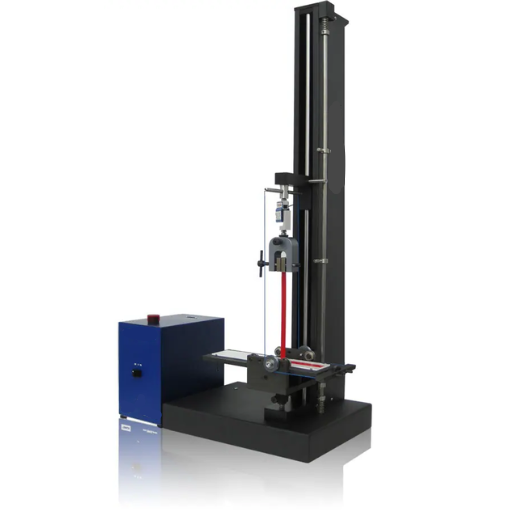
1.Surface Preparation: Make certain that all cleaning of the substrate is thorough to remove contaminants that may impair adhesion, such as dirt, oil, or grease. If necessary, go ahead to roughen the surface by mechanical abrasive processes or chemically treat it for good tack.
2.Environmental Control: The adhesion test should be performed under controlled environmental conditions of temperature and humidity to reduce variability from external causes. It is necessary to condition the substrate and coating to predetermined standard conditions before performing the test.
3.Test Method Selection: Select the appropriate method for your testing, such as cross-hatch, pull-off, or peel tests, depending on the substrate, coating, and intended applications. Refer to the ASTM or ISO recommended standards for each testing procedure.
4.Tool Calibration: Calibrate instruments and tools for testing on every occasion to guarantee producing accurate data and maintaining consistent test pressure as well as force.
5.Documentation: Record everything relevant, from substrate type, coating details, and testing conditions to detailed observations. Such documentation is indispensable to aid reproducibility, analysis, and the validation of results.
Performing according to these identified best practices ensures adhesion tests get precise and reproducible information relating to the bonding efficiency between coatings and substrates. Such decisions aid in the optimization of materials and processes.
Proper Surface Preparation Techniques
Proper surface preparation is essential for the coating system to achieve maximum adhesion with its substrate. Based on detailed analysis and best practices, I will list steps in the process:
1.Cleaning the Surface: I first detach any grease, oil, dirt, and similar contaminates deposited on the substrate with appropriate cleaning agents or degreasers. Interfering residue can hamper adhesion.
2.Mechanical Abrasion: A final roughening may be conducted by mechanical means: sanding or abrasive blasting. An increase in surface roughness favors mechanical adhesion between the coating and the substrate.
3.Chemical Treatment: Depending on the type of substrate, I perform chemical etching or apply primers to improve surface energy and compatibility with the coating. The chemicals always have to be selected carefully to match with substrate type.
4.Moisture Control: I make sure the substrate is really dry prior to coating application. If there is moisture present, adhesion shall be reduced and in time, coating shall fail.
Following the above steps will give consistent and reliable results, which in turn will bring about optimisation of coating system performance and durability. Preparing the surface properly is in accordance with the industry standards and will greatly enhance the entire adhesion process.
Following Standardized Testing Protocols
My adherence to standardized testing is meant to ensure that results be true and trustworthy. Using some standard methods such as ASTM or ISO standards, all the tests could be performed systematically for important parameters such as coating adhesion, thickness, and resistance to the environment. The test regime could constructively ensure that the rules are followed and prevent any problems from arising on the job. Application of any test should therefore be in total alignment with just these worldwide acceptable structures in order to maintain the integrity and lifespan of these coating systems.
Accurately Interpreting Adhesion Test Results
The interpretation of adhesion test results requires that one be well-versed in the testing method applied and in evaluation criteria. For instance, while using a cross-cut test, pull-off test, or tape test, the kind of data obtained on coating adhesion quality will be different. Sometimes it could be a case of cohesive failure of the coating within itself, adhesive failure at the interface between coating and substrate, or a mix of either of them. Observing the failure pattern, along with a quantitative measurement like tensile strength or area of adhesion loss, allows for very detailed evaluation. By comparing test results with industrial requirements listed in the test standards like ASTM D3359 or ISO 2409, one could better predict the performance of a coating system, as well as its ability to sustain certain applications.
Common Challenges in Adhesion Testing
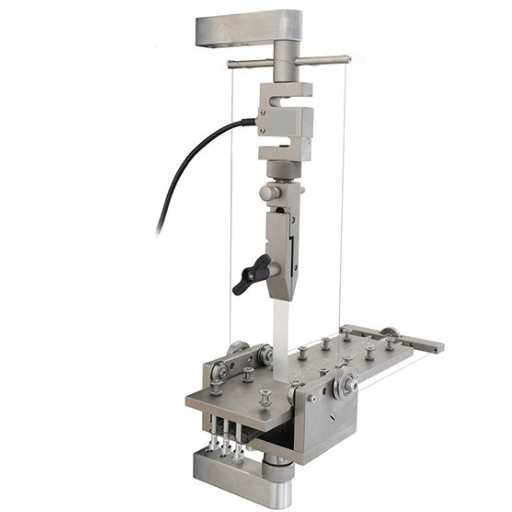
Several issues in adhesion testing challenge the accuracy and repeatability of the results. Variations in the substrate materials, surface preparation, or environmental conditions can easily make outcomes inconsistent. The test method itself can also pose an issue-which-worthy of consideration-should it be pull-off, cross-hatch, or peel? Operator technique and equipment calibration can influence the accuracy of the test. Result interpretation can also be difficult, especially in differentiating between cohesive failure within a substrate or adhesive failure at the interface. To avoid such issues, proper standardized adherence along with complete documentation of test conditions must be undertaken.
Improper Sample Preparation Issues
Improper sample preparation may affect considerably the accuracy and reliability of testing results in adhesion. Inadequate cleaning of the surface, variable sample dimensions, or even application of the adhesive material may provide erroneous data. Important is any contaminant or residue; these substances can interfere with proper bonding abilities and may yield false or misleading results during testing. Less-than-uniform curing time or environmental parameters, such as temperature and relative humidity during preparation, can influence the properties of said materials and, in turn, can affect the results. Thus, to tackle these problems, one must adhere to the preparation procedures, use proper handling techniques of said materials, and establish an environment for preparation. These should help maintain consistency between test results.
Calibration Errors in Equipment
Calibration errors arise when equipment standards deviate from desired norms during the calibration procedure. Usually, such deviations develop due to improper calibration or wear and tear or due to incorrect environmental settings being applied at the time of calibration. A calibration error significantly diminishes the accuracy and reliability of the given test data that results in wrong interpretations and sub-optimum evaluation of actual performances. Examples of common errors are: drifting of the equipment with time, infrequent calibration, and using reference instruments that contain calibration errors themselves. In order to minimize such calibration errors, the following must be done: conducting calibration in strict periodic fashion, use of accurately calibrated reference standards during calibration, and all calibration procedures should be carried out considering the required environmental conditions as prescribed. It is also necessary to keep regular records regarding calibration; this record will assist as a matter of reference in evaluating the performance of the equipment and in timely foreseeing potential occurrences of inaccuracies.
Overlooking Environmental Factors
From temperature, humidity, vibration, electromagnetic interference, the list goes on: all can seriously interfere with certified equipment and disrupt measurements. Thus, any environmental parameter left unconsidered may impact data consistency negatively and hamper system performance. As a quick fix, consider the fact that every piece of equipment functions in accordance with acceptable environmental conditions given by its manufacturer. Besides being mindful of this, one can also attempt to monitor and control said environmental variables. Also, isolating sensitive equipment away from known environmental disturbances would be of some value. Carrying out an environment audit on a fairly regular basis will further diminish associated risks and, in return, assure dependable and accurate readings for decades to come.
Reference Sources
-
Test Methods for Coating Adhesion | Resources – This resource discusses various test methods, including ASTM standards for coating adhesion.
-
Organic Coatings Part 5: Adhesion Testing: Methods – Provides insights into methods like cross-hatch testing and their benefits.
-
Adhesion Testing: A Comprehensive Guide – A detailed guide covering methods, applications, and the significance of adhesion testing.
-
Adhesion Testing – Focuses on wet adhesion testing and its applications in submerged conditions.
-
The use of scratch adhesion testing for the determination – A scientific article on scratch adhesion testing for thin, hard coatings like titanium nitride.
Frequently Asked Questions (FAQs)
Q:What is an adhesion test and why do coatings need such testing?
A:An adhesion test checks the coating’s ability to bond to an underlying surface, and it has importance in ensuring all paints and coatings are durable and perform as expected. It should not and needs to have strong adhesion to prevent segregation such as peeling or flaking and must be probably tested for life and aesthetic purposes.
Q:How does the cross hatch adhesion test actually work?
A:The test for cross hatch adhesion entails making a series of cuts through the coating in both directions to create a grid. Then, a pressure-sensitive tape is stuck to the cuts and peeled away. The level of adhesion is determined by how much coating remains on the substrate. This method is very common, given its simplicity and effectiveness.
Q:Are pull off adhesion testers also used for coating investigation?
A:Pull-off adhesion testers, such as the Elcometer 106, measure the force required to pull coating off the substrate to provide a quantitative evaluation of the coating. The strength is essential from a quality control point of view for coatings on steel and various other surfaces.
Q:Could you describe the tape test method for rating adhesion?
A:The tape test method for rating adhesion involves applying a cross hatch pattern in the coating and sticking a cross hatch tape to the surface. After a given time, the tape is peeled off and adhesion is rated according to the extent of coating removed. This method is very suitable basically for testing paint adhesion on flat panel surfaces.
Q:What is included in a paint adhesion kit?
A:Usually the adhesion kit contains instruments such as a cross hatch cutter, pressure-sensitive adhesive tapes, and an instrument case. Paint adhesion kits provide a quick and reliable way to test the adhesion of various coatings on different substrates out in the field.
Q:What are some. Standard international methods for adhesion testing?
A:The adhesion testing method is often done in conformity with ASTM standards that give instructions with regard to testing the adhesion of organic coatings. This helps you get consistent and reliable results, which have become the basis for the quality assurance of coatings and coating systems.
Q:How does cohesive strength interplay with adhesion of coatings?
A:The term cohesive strength implies strength within the coating itself. A coating can adhere to the substrate but will still fail if its internal cohesive strength is insufficient. It is thus pertinent to check for adhesion to the substrate as well as cohesive strength to assure performance of a coating.”
Q:What are the factors affecting coating adhesion on metallic substrates?
A:Factors affecting coating adhesion on metallic substrates include surface preparation, choice of coating, and environmental conditions. Cleaning and priming of surfaces must be adequate if optimum adhesion is to be achieved or to prevent rupture or peeling.
Q:What is the significance of using dollies in adhesion tests?
A:Dollies used in a pull off adhesion test help provide stability to the surface during measurement of the adhesive force required to issue the force to separate the coating from substrate. This helps minimize variation in the testing and enables the repeatability of adhesion strength evaluation.

